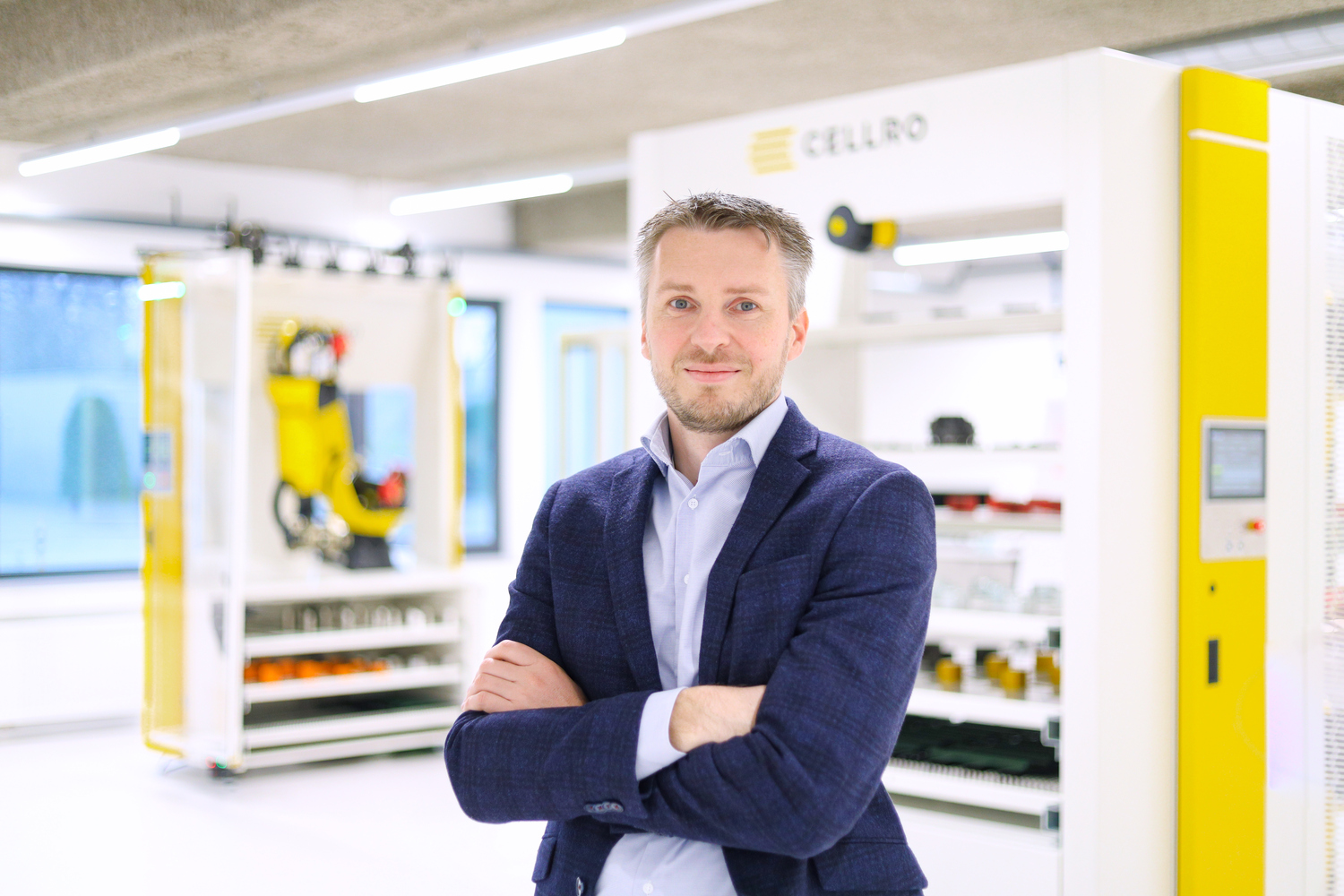Arnoud, what key trends do you see for 2024?
“The year 2024 will be all about dealing with fluctuating customer demand. The market has long focused on continuous growth, but now we are seeing a shift towards periods of fluctuating workload. Sometimes there is less work, and then there is another peak where quick delivery is required. This requires a dynamic approach to productivity.”
Arnoud sees another development: “Another important change is the availability and employability of staff. We see that nowadays more often people prefer a shorter work week. This means that the balance between staff availability, machinery and automation is becoming increasingly important. The ability to respond quickly and efficiently to changing market demands, combined with smart deployment of human and technological resources, is becoming crucial.”

“The days when operators had to program their robots with a teach pendant are far behind us.”
How are machining companies responding to these trends?
“Machining companies often have a long history of trust and quality with their customers. Building new relationships alongside these existing ones is a challenge. Every company has its preference in terms of type of work, whether it is single pieces with a lot of finishing, high-mix, low-volume or series production.”
Arnoud stresses the importance of clear choices in machinery and automation: “A strategic choice in both your machinery and its automation is essential. It sends a clear signal to your customers about your production capabilities and quality.”
As an example, Arnoud cites the Dutch-based company Boers & Co. “Look at Boers & Co, one of our customers. Their decision to invest in our Xcelerate X35 not only increased their production efficiency, but it also strengthened their ability to take on diverse work and ensure quality. These kinds of adjustments are crucial for building new customer relationships and maintaining craftsmanship in their production process.”
How do you look back on the innovations of recent years?
“Increasing flexibility in CNC production is essential. In recent years, we have therefore further expanded our standardised CNC automation portfolio to enable even better unmanned production of multiple small product series. For this, we have added, among other things, advanced gripper technologies, such as R-C2 from the Swiss firm Gressel.”.
There was another important development: “Another focus point was making it as easy as possible for operators to work with robot automation. The days when operators had to program their robots with a teach pendant are far behind us. Today, user-friendly user interfaces help operators to quickly schedule new production jobs and create products.”

What is Cellro’s long-term vision in this changing market?
“In Cellro’s future vision, the focus is on achieving a more efficient CNC manufacturing process through our digital ecosystem and manufacturing intelligence platform. Through digitisation, we create a seamlessly integrated and automated CNC manufacturing system. This enables better decision-making and more efficient execution of CNC shopfloor tasks.”
Arnoud de Kuiper explains: “In many machining operations, the work process pauses temporarily when materials, tools and fixtures are delivered to machines. A first step is to digitise essential processes such as work preparation, tool management, job planning and measuring systems. With this, machining companies are taking an important step towards more organised and continuous production.”
He adds: “We are also seeing increasing interest in the automation of logistics processes. Integrating these within our platform, such as automating the supply and removal of raw material and tools by AGVs (Automated Guided Vehicles), will further improve the efficiency and flexibility of the production process.”
“The modularity of our product portfolio is also high on the agenda. Cellro wants to offer flexible automation solutions that grow with the needs of our customers. We want to enter partnerships for the long term. As an example, Arnoud cites the case of KMWE. “Our cooperation with KMWE, a leading company in production and assembly of precision components, has lasted for more than 10 years. Our collaboration is about creating a valuable partnership where together we can optimise their production processes.” he explains.

“Machining companies who use CNC-automation strategically often undergo a transformation. They can no longer do without it. After all, who doesn’t want to go from 6 to 18 daily spindle hours per CNC machine?”
To conclude, what advice would you give to machining companies considering investing in CNC automation this year?
“Machining companies who use CNC-automation strategically often undergo a transformation. They can no longer do without it. This rethinking almost automatically leads to greater success. After all, who doesn’t want to go from 6 to 18 daily spindle hours per CNC machine?”
“When considering CNC automation, I therefore advise to think carefully about the question: what work best suits my machining company and operators’ skills? Automating all manual processes on a CNC machine is not always cost-effective. Consider the 80-20 rule: what if you automate 80% of the most common work? Such an approach can halve the investment.”.
Arnoud concludes with: “Every machining company is unique and there is no standard road to success. Collaborating with different parties and creating a roadmap together often proves successful. Cellro goes further than just supplying automation technology. We explore together with customers what is needed, whether it is automation, digitisation, or logistics optimisation. We are ready to discuss the possibilities, share experiences and create a tailor-made solution together.”
